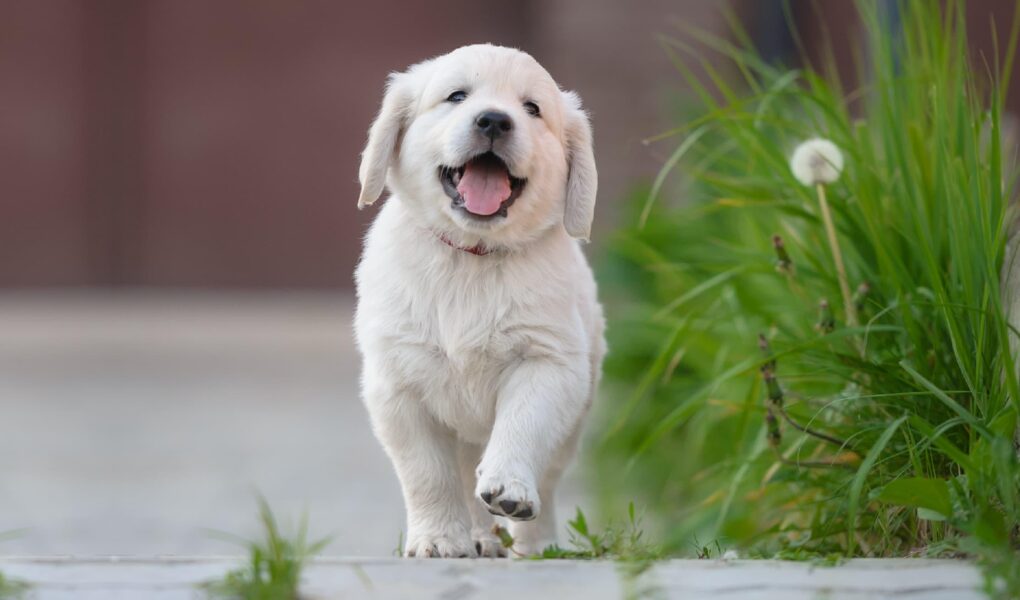Title: Understanding the Whines: Decoding Your Puppy’s Crate Communication
When you bring a new puppy into your home, you’re not just welcoming a bundle of joy and mischief; you’re also inviting a host of new sounds and behaviors, one of the most common being the plaintive whine from their crate. This vocal expression can tug at your heartstrings and leave you wondering: “What does my puppy want?” In this article, we will explore the reasons behind this behavior, offering insights into your puppy’s needs and emotions. Armed with knowledge, you can transform those cries for attention into a calmer, more comfortable crate experience for both you and your lovable companion. Join us as we delve into the world of puppy communication and discover how to nurture a harmonious relationship from the very start.
Table of Contents
- Understanding the Reasons Behind Puppy Whining in the Crate
- Creating a Comfortable Crate Environment for Your Puppy
- Effective Training Strategies to Minimize Whining
- Troubleshooting Puppy Crate Whining: Common Solutions and Tips
- Q&A
- Wrapping Up
Understanding the Reasons Behind Puppy Whining in the Crate
Puppy whining in their crate can be a perplexing and sometimes frustrating experience for new dog owners. Understanding the underlying reasons behind this behavior is crucial to effectively addressing it. First and foremost, the crate can represent a new environment that your puppy finds intimidating. Puppies are naturally curious and social animals, and confinement can evoke feelings of loneliness or fear. They might whine to express their distress or to seek your attention, reflecting their innate desire for companionship and security. Additionally, some puppies may associate the crate with negative experiences, such as being left alone for too long or experiencing discomfort while inside.
Another significant factor contributing to whining is a puppy’s need for basic care. This includes their bathroom needs, hunger, or thirst. Puppies have small bladders and may not be able to hold it for extended periods, leading them to vocalize their discomfort. In addition, they may be suffering from teething discomfort or simply be seeking comfort from their human family. Recognizing these needs is essential for resolving the whining issue. Below is a table showing some common reasons for crate whining along with potential solutions:
| Reason for Whining | Potential Solution |
|---|---|
| Loneliness | Gradually increase crate time; use toys or a piece of your clothing. |
| Bathroom needs | Ensure regular potty breaks, especially after meals or playtime. |
| Hunger or thirst | Provide food and fresh water before crating; establish a feeding schedule. |
| Teething discomfort | Provide appropriate teething toys to soothe their gums. |
Creating a Comfortable Crate Environment for Your Puppy
Ensuring your puppy feels safe and snug in their crate is the key to reducing whining and anxiety. Start by choosing a crate that is the right size; it should be spacious enough for them to stand, turn around, and lie down comfortably without feeling overwhelmed. Comfortable bedding such as soft blankets or a dog bed can create an inviting atmosphere. Additionally, placing the crate in a quiet area of your home, away from too much foot traffic and noise, will help your puppy perceive it as a cozy sanctuary rather than a place of isolation.
To further enhance your puppy’s experience, consider adding some personal touches. This could include a few favorite toys to alleviate boredom and promote a sense of familiarity. Here are a few tips to set up their crate environment effectively:
- Use calming sprays or diffusers designed for dogs to help reduce stress.
- Introduce a warmth source, like a cozy blanket, to mimic the warmth of a littermate.
- Engage with your puppy through short periods of crate training while you’re nearby, rewarding them for calm behavior.
| Tip | Benefit |
|---|---|
| Comfortable Bedding | Promotes relaxation and comfort |
| Toys | Keeps your puppy entertained |
| Calming Aids | Reduces anxiety and agitation |
Effective Training Strategies to Minimize Whining
Training your puppy to feel comfortable in a crate is an essential step to minimizing whining. One effective strategy is to establish a positive association with the crate. Start by making the crate a cozy nook, adding soft bedding and toys. To encourage your puppy to explore it voluntarily, you can toss in some treats or use a high-value snack. Set aside time each day for brief play sessions around the crate, gradually leading him inside without closing the door at first. Over time, you can begin to close the door for short periods while rewarding calm behavior, helping your puppy understand that the crate is a safe and pleasant place.
Another proven method to reduce whining is through consistent crate training routines. Puppies thrive on structure, so try to keep a regular schedule for feeding, potty breaks, and crate time. During these times, be sure to stay calm and consistent, as your demeanor plays a significant role in how your puppy reacts. Avoid long periods in the crate at the beginning; instead, gradually increase crate time as your puppy becomes more accustomed. Here’s a simple table to help visualize a potential routine:
| Time | Activity |
|---|---|
| 7:00 AM | Potty Break |
| 7:15 AM | Breakfast & Play |
| 8:00 AM | Crate Time (15 min) |
| 8:15 AM | Potty Break |
| 8:30 AM | Playtime |
Troubleshooting Puppy Crate Whining: Common Solutions and Tips
Dealing with a whimpering pup can be stressful for both pet and owner. To tackle this issue, it’s essential to establish a comfortable crate environment. Make sure the crate is the right size; a snug fit will help your puppy feel secure, while too much space may encourage messiness and anxiety. Adding soft bedding and a few safe toys can provide comfort. Additionally, consider covering the crate with a light blanket to create a cozy den-like space, simulating the safety of a natural shelter. If it’s dark, sometimes a simple nightlight can also soothe a nervous puppy.
If your puppy’s whining persists, it might be signaling a need for attention or a bathroom break. Implement a consistent scheduled routine that includes frequent potty breaks, especially after meals, playtime, and naps. Practice short periods of crate time while keeping nearby, gradually increasing the duration as your puppy adapts. Always reward your furry friend with praise and treats for quiet behavior in the crate. Here are some effective strategies to minimize whining:
- Practice crate training by introducing short sessions.
- Keep a consistent routine for meals, play, and rest.
- Provide distractions like interactive toys.
- Use calming scents like lavender to promote relaxation.
Q&A
Q&A: Understanding and Managing Puppy Whining in a Crate
Q1: Why is my puppy whining in the crate?
A1: Whining is a common form of communication for puppies. When your puppy is in the crate, they may whine for various reasons – boredom, discomfort, anxiety, or a desire for attention. Think of it as your puppy’s way of saying, “Hey, I need something!” It can also be a sign that they are adjusting to their new environment, as many puppies feel a bit uncertain in a crate at first.
Q2: Is whining in the crate a sign of a serious issue?
A2: Not necessarily. While consistent whining can indicate problems like separation anxiety or illness, occasional whining is quite normal, especially during the adjustment period. Puppies are learning to be independent and might just need some time to feel comfortable in their new “den.”
Q3: How can I help my puppy stop whining in the crate?
A3: Patience and consistency are key. Here are a few strategies to try:
- Create a Positive Association: Make the crate a cozy, inviting space. Use soft bedding and toys, and consider feeding your puppy their meals inside.
- Gradual Crate Training: Start with short periods in the crate, gradually increasing the time as your puppy becomes more comfortable.
- Exercise Before Crating: A well-exercised puppy is more likely to settle down in the crate. Play with your puppy or take them for a walk before crating.
- Ignore the Whining: If you’ve ensured that your puppy’s needs are met (no hunger, thirst, or need to go outside), it’s sometimes best to wait it out. Responding to whining can inadvertently reinforce the behavior.
Q4: When should I worry about my puppy’s whining?
A4: Whining becomes a concern if it’s excessive or accompanied by other signs of distress, such as pacing, destructive behavior, or inconsolable barking. If your puppy seems to be in pain or shows changes in behavior (like loss of appetite or excessive lethargy), it’s best to consult your veterinarian to rule out any health issues.
Q5: Can I prevent whining before it starts?
A5: Yes! A proactive approach can help minimize whining from the start. Start crate training early, introduce the crate gradually, and create a positive environment. Make sure your puppy has plenty of physical and mental stimulation throughout the day, as a tired puppy is generally a quiet puppy.
Q6: Can certain breeds be more prone to whining in the crate?
A6: Some breeds, particularly those known for their strong attachment to humans (like Labradors and Cocker Spaniels), may be more likely to whine when crated. However, every puppy is an individual, and their temperament, past experiences, and training will also play significant roles.
Q7: Are there any training tools that can help?
A7: Yes! Puzzle toys can distract and engage your puppy. Using a calming scent, like lavender, can create a soothing atmosphere. You might also consider a pheromone diffuser or spray designed to relax dogs. However, it’s great to remember that each puppy is unique, and what works for one may not work for another.
Q8: When should I start thinking about no longer crating my puppy?
A8: Generally, most puppies can learn to be trusted outside the crate between 6-12 months of age, depending on their maturity, behavior, and training progress. It’s crucial to assess your puppy regularly and ensure they can cope with being unsupervised before making that transition.
Understanding your puppy’s behavior in the crate can lead to a more harmonious cohabitation experience. Patience and skillful training will pave the way for your puppy to feel secure and content in their crate sanctuary. Happy training!
Wrapping Up
As you navigate the journey of puppy parenthood, understanding and addressing your furry friend’s whining in their crate is essential for fostering a sense of security and comfort. By recognizing the underlying causes of their vocal expressions and implementing gentle training methods, you can turn those distressed whimpers into peaceful snores. Remember, patience and consistency are your best tools. With time, your pup will learn to see their crate as a cozy haven rather than a place of worry. Embrace this learning process, and soon enough, both you and your puppy will bask in the calm and quiet of a well-adjusted routine. Happy crate training!



